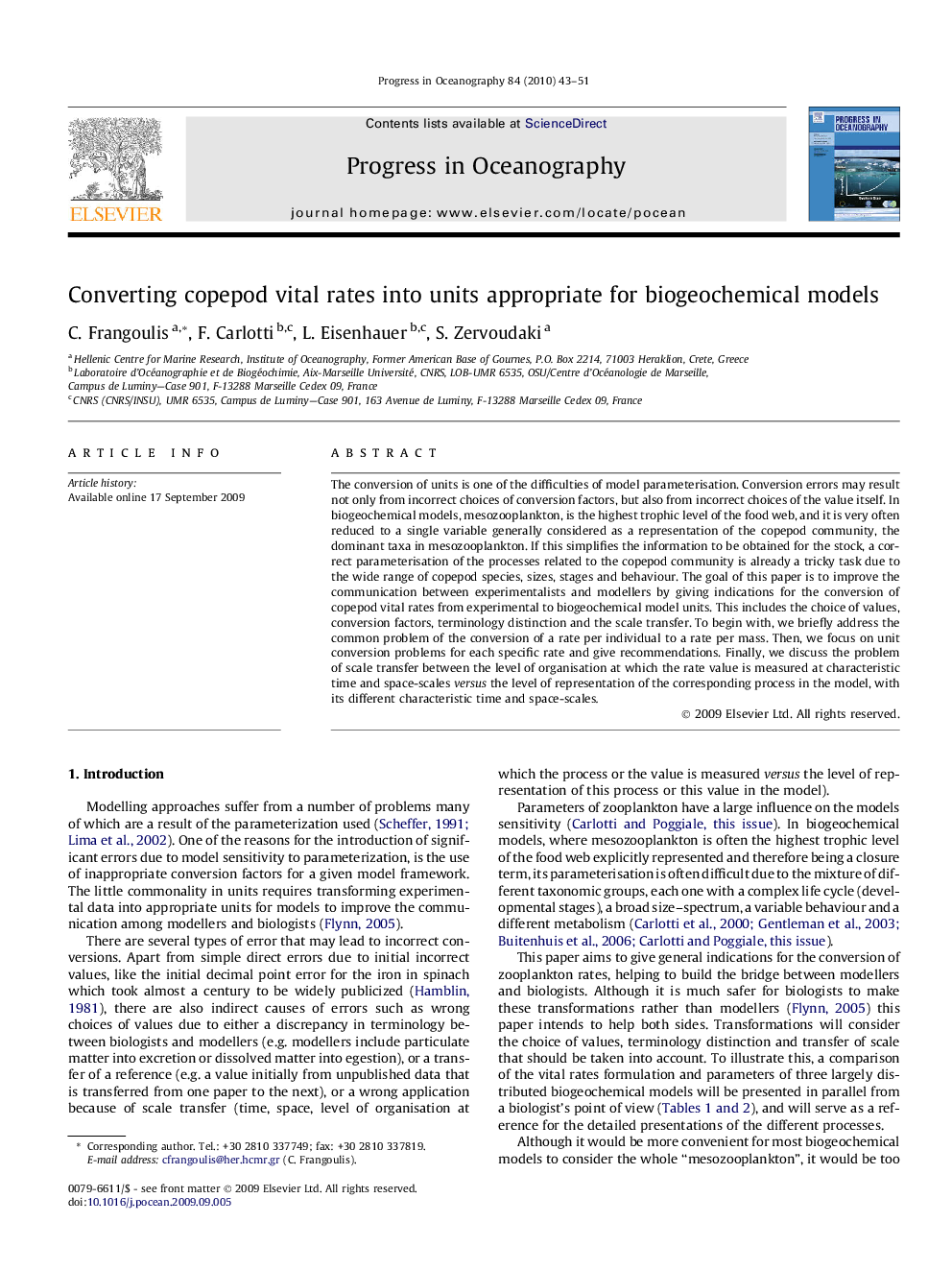| Article ID | Journal | Published Year | Pages | File Type |
|---|---|---|---|---|
| 4553533 | Progress in Oceanography | 2010 | 9 Pages |
The conversion of units is one of the difficulties of model parameterisation. Conversion errors may result not only from incorrect choices of conversion factors, but also from incorrect choices of the value itself. In biogeochemical models, mesozooplankton, is the highest trophic level of the food web, and it is very often reduced to a single variable generally considered as a representation of the copepod community, the dominant taxa in mesozooplankton. If this simplifies the information to be obtained for the stock, a correct parameterisation of the processes related to the copepod community is already a tricky task due to the wide range of copepod species, sizes, stages and behaviour. The goal of this paper is to improve the communication between experimentalists and modellers by giving indications for the conversion of copepod vital rates from experimental to biogeochemical model units. This includes the choice of values, conversion factors, terminology distinction and the scale transfer. To begin with, we briefly address the common problem of the conversion of a rate per individual to a rate per mass. Then, we focus on unit conversion problems for each specific rate and give recommendations. Finally, we discuss the problem of scale transfer between the level of organisation at which the rate value is measured at characteristic time and space-scales versus the level of representation of the corresponding process in the model, with its different characteristic time and space-scales.
